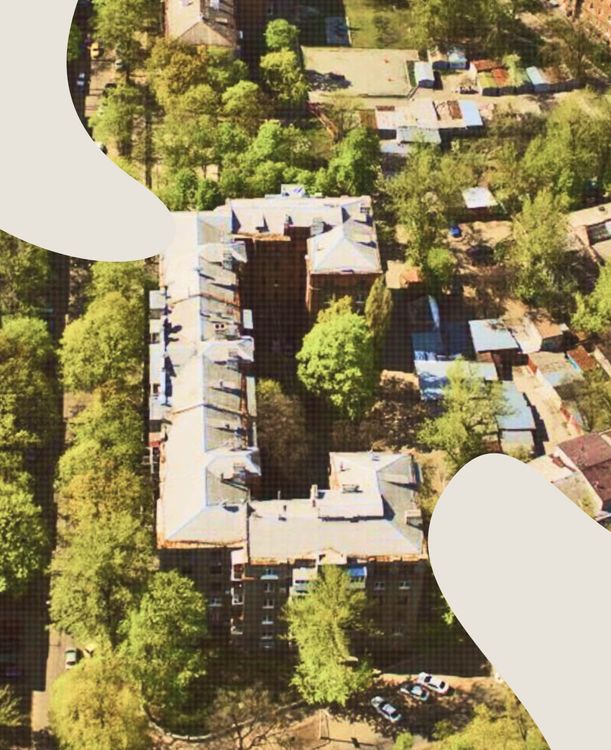Holodomor

The genocide of the Ukrainian people. The result of a man-made famine specially engineered by the communist leadership, which caused the death of millions of people.
1932–1933
Fonts:
Morta (Brute)
Designer:
The Holodomor of 1932-1933 is not just a historical event for the Ukrainian people, but a wound that has been bleeding for nearly a century. The memories of that terrible year passed on in Ukrainian families could not be taken away from them. That year, the Soviets turned food into a weapon. Today, Russia is repeating the same crime...
To understand the phenomenon of the Holodomor, let us take a step back and see what caused it.
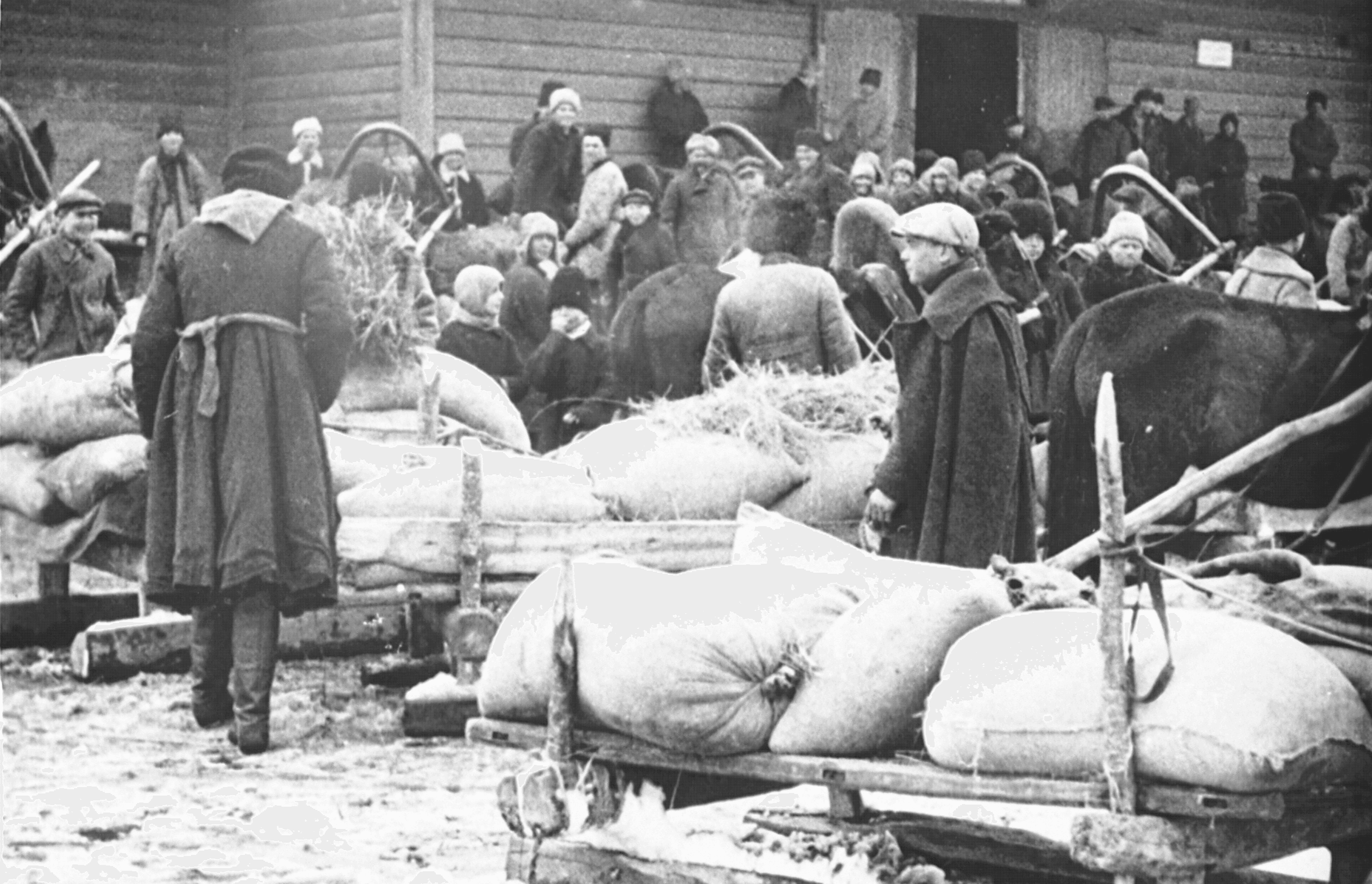
In 1917, there was a surge in the Ukrainian national liberation movement. Divided between the Austro-Hungarian and Russian empires, Ukraine desperately sought independence, and a year later, in 1918, was able to win it with the proclamation of the Ukrainian People’s Republic. Soon after, another historic event took place — the signing of the Act Zluky (the Unification Act), which united the Ukrainian lands dispersed under different empires into one entity. Unfortunately, though, the newly formed Ukraine was captured by the Bolsheviks in the early 1920s, and the struggle for independence failed.
However, that short period of statehood did not pass without a trace: the Ukrainians had established governmental, cultural and research institutions, and a surge in art had taken place.
All this was by no means part of the Bolsheviks’ plans.
But during the 1920s, they had to reckon with the national aspirations of Ukrainians. Hence, the Bolsheviks resorted to Ukrainization and introduced the New Economic Policy (NEP) aimed at neutralizing the Ukrainian movement and strengthening their positions in the Ukrainian SSR.
By the end of the 1920s, things had gone from bad to worse — Joseph Stalin became the sole dictator, Ukrainization and the NEP were curtailed, bringing forth a period of forced collectivization and industrialization. The Ukrainian intellectuals in charge of Ukrainization faced trial, and as a result, about 300 people were convicted on bogus charges.
Next were the peasantry. They were forcibly driven into collective farms, but the wealthier among them were labeled “kulaks” (or “kurkuls” in Ukrainian) for having more property than the Soviets considered normal and deported en masse to Siberia or Kazakhstan. The Ukrainian villages rebelled. In 1930, more than four thousand protests were recorded against collectivization, with 1.2 million peasants taking part. The Bolsheviks were forced to retreat then, but the next year, though less massively, the “dekulakization” continued.
Ultimately, 70% of farms were collectivized, but it did not bring the expected results. Thus, in 1931, in order to meet the set quotas, the authorities took away from the peasants almost their entire harvest. In 1932, the villages were already starving. Collective farm workers appealed to the state and party leadership, sent numerous letters and reports on the starvation deaths of peasants.
And what was the authorities’ response? They adopted the notorious “Law on Five Ears of Grain,” which punished by firing squad the «heft» of collective farm property, including several ears of grain picked up in a field.
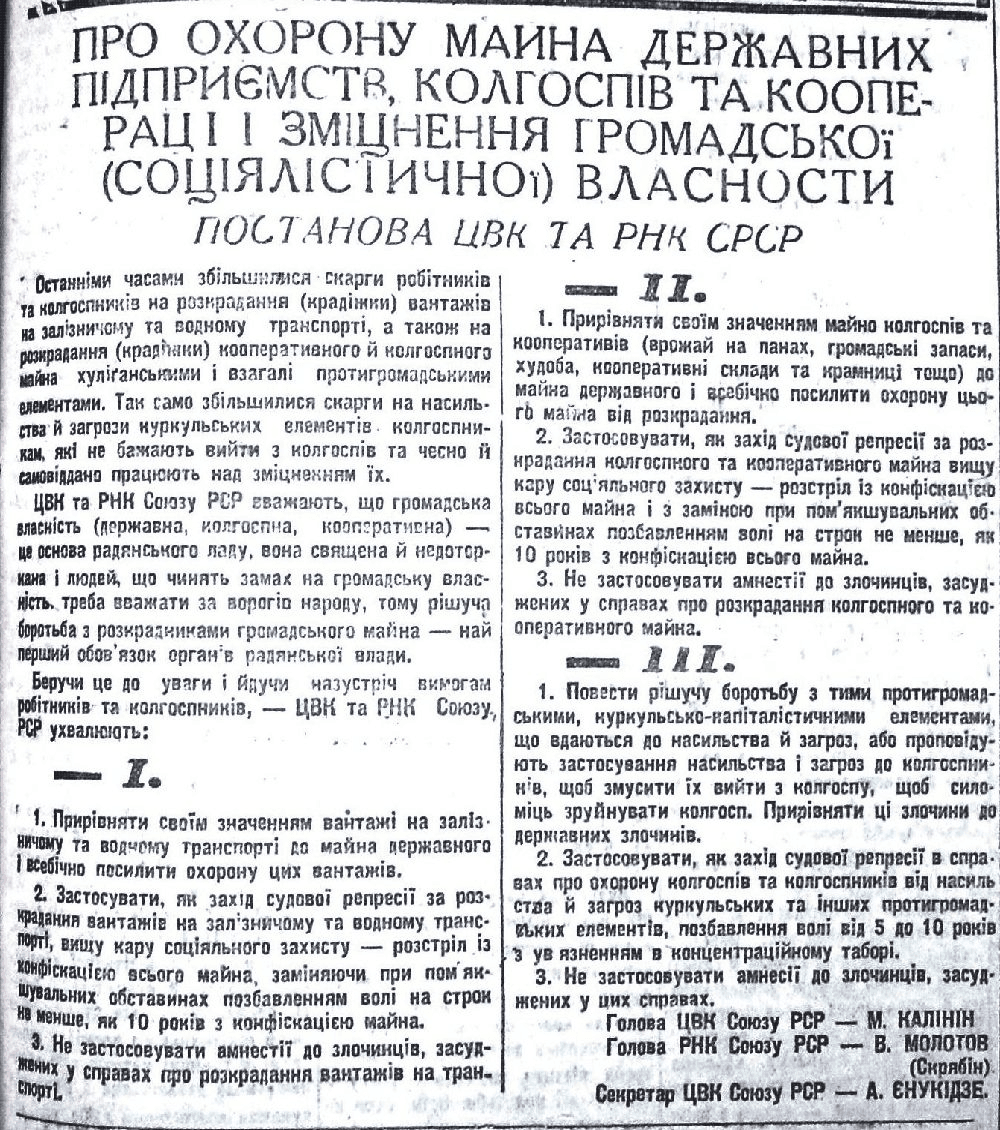
Stalin turned food into a weapon — in this way, he sought to subdue the Ukrainians and make Ukraine a «model republic», without which he could not envision his empire. His crime knew no bounds, and the scale of cynicism and atrocities still bewilders.
For more than a year, all food and livestock were forcibly taken away from the villagers, and when quotas were not met, villages and entire districts were put on «black lists», that is, their inhabitants were deprived of freedom of movement and the opportunity to get food.
The Ukrainian villages became hell on earth. At the same time, repressions against other segments of the population also unfolded. Sadly, the Soviet leadership’s concealment and falsifications regarding the Holodomor have made it impossible to know the exact number of victims, but in academic discussions, the supposed number is from four to 10 million people.

Millions of starved Ukrainians were killed by the Soviet totalitarian regime. The core of the Ukrainian nation was almost annihilated.
Despite the horrific statistics, the background for the famine and the repressive policies of the Soviet Union against the Ukrainian people, the Holodomor has still not been unanimously recognized as genocide internationally. The criminals have not been convicted, and the victims have not been honored. Meanwhile, Russia continues its attempts to destroy the Ukrainian identity and once again opts for genocidal practices, provoking a food crisis in order to put pressure on the international community.
History will repeat itself until we name the perpetrators, condemn their crimes against humanity, honor the victims and stop this evil once and for all.
Fonts:
Morta (Brute)
Next letter and event

Holodomor
this project
in social
“Shchedryk” (The Little Swallow)

Holodomor


Zhyvyi lantsiuh (Human chain for the 71st anniversary of the Act Zluky)


Ukrainski sichovi striltsi (The Ukrainian Sich Riflemen, or the USS)

Khreshchenia Rusi (Christianization of Kyivan Rus’)


Falz-Fein and his “Askania Nova”

“Shchedryk” (The Little Swallow)

Antonov AN-225 Mriya ("The Dream")
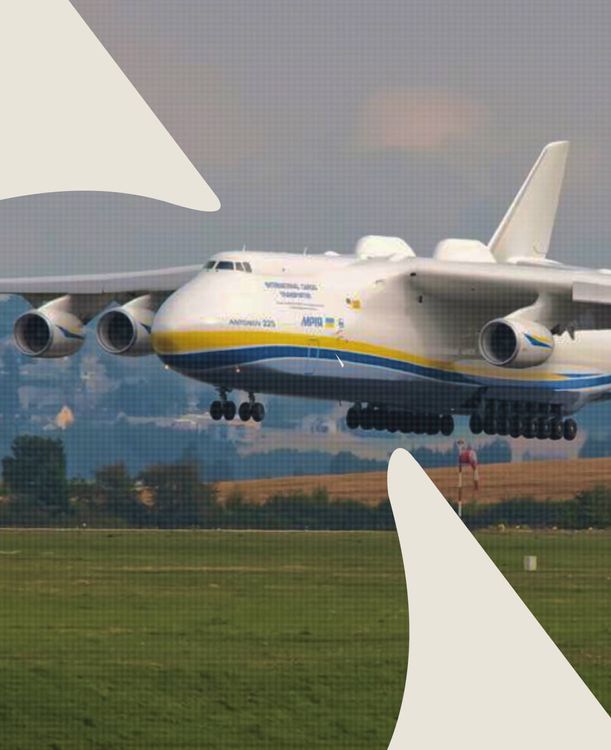
Kvitka Cisyk (Kasey Cisyk)

“Smilyvi zavzhdy maiut shchastia” (“The brave always have happiness”)

Zaporizka Sich (The Zaporizhian Host)

Yizhak protytankovyi (Czech hedgehog)

Georgiy Gongadze

Khreshchenia Rusi (Christianization of Kyivan Rus’)

“Shchedryk” (The Little Swallow)

Creative & Tech Online Institute
Медіа про дизайн, креатив і тех індустрії

Ukrainski sichovi striltsi (The Ukrainian Sich Riflemen, or the USS)

Yuzivka

Lisova Pisnia (The Forest Song)
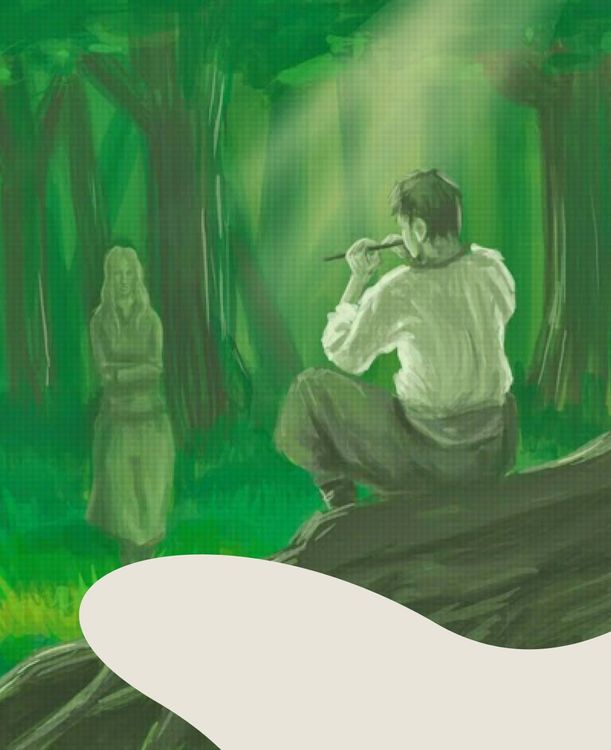

Aeneid by Ivan Kotliarevsky
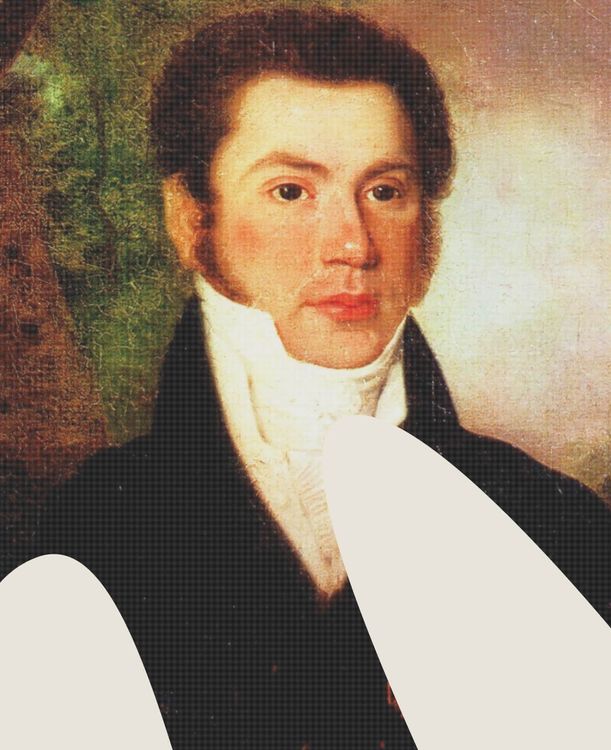

Danylo Halytskyi

Holodomor

1991 Ukrainian Independence Referendum


Falz-Fein and his “Askania Nova”

Kvitka Cisyk (Kasey Cisyk)

Yrii (/'irij/: iriy), yndyk (/in'dik/: turkey) and yrod (/'irod/: Herod)

Peresopnytske Yevanheliie (The Peresopnytsia Gospel)

Yrii (/'irij/: iriy), yndyk (/in'dik/: turkey) and yrod (/'irod/: Herod)

Zaporizka Sich (The Zaporizhian Host)

“Smilyvi zavzhdy maiut shchastia” (“The brave always have happiness”)

1991 Ukrainian Independence Referendum




